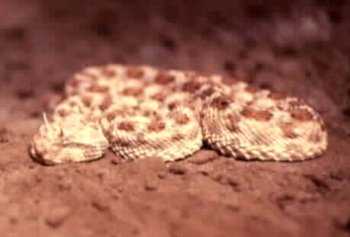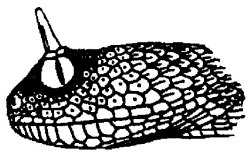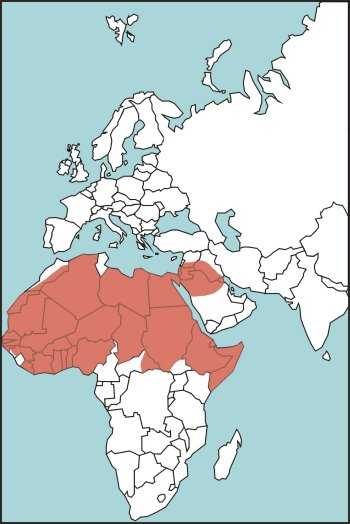Safety / Survival / Army Field Manuals / AFM 3-05.70
Survival index
All text and images from the U.S. Army Field Manual 3-05.70: Survival.
Appearance of the materials from the U.S. Army Field Manual here does not constitute or represent endorsement by probablyhelpful.com.
ProbablyHelpful.com is not responsible for inaccurate or outdated information provided by the U.S. Army Field Manual 3-05.70.
Appendix E
DESCRIPTIONS OF VENOMOUS SNAKES
Horned desert viper

Horned desert viper
Cerastes cerastes
Description: Pale buff color with obscure markings and a sharp spine (scale) over each eye.
Characteristics: As with all true vipers that live in the desert, it finds refuge by burrowing in the heat of the day, coming out at night to feed. It is difficult to detect when buried; therefore, many bites result from the snake being accidentally stepped on. Its venom is hemotoxic, causing severe damage to blood cells and tissue.
Habitat: Only found in very arid places within its range.
Length: Average 45 centimeters (18 inches), maximum 75 centimeters (30 inches).
Distribution: Most of northern Africa and the Mideast (Figure E-30).

Figure E-30. Horned Desert Viper Habitat
Survival index
All text and images from the U.S. Army Field Manual 3-05.70: Survival.
Appearance of the materials from the U.S. Army Field Manual here does not constitute or represent endorsement by probablyhelpful.com.
ProbablyHelpful.com is not responsible for inaccurate or outdated information provided by the U.S. Army Field Manual 3-05.70.
Copyright probablyhelpful.com 2021-2025

